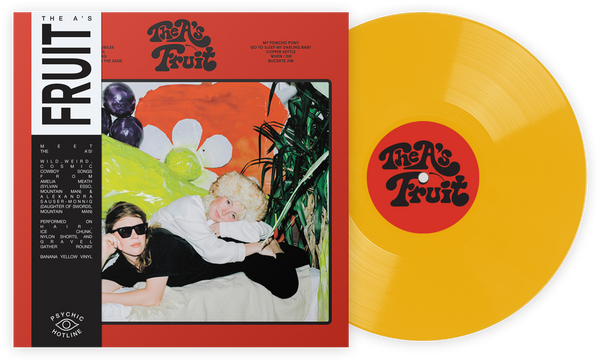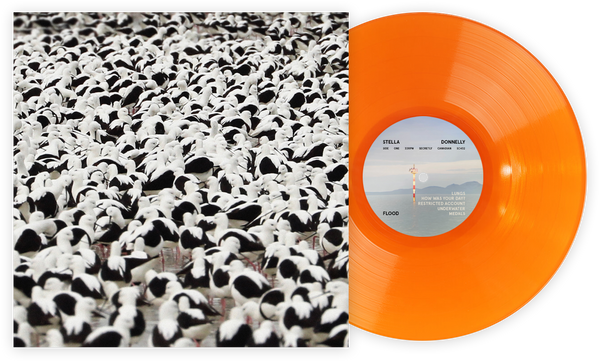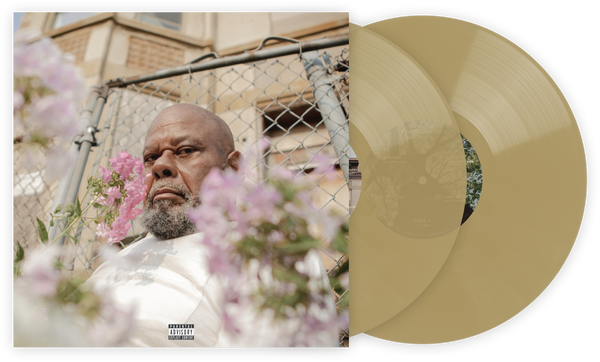How ‘Let It Bleed’ Became The Rolling Stones’ Most Important LP
The Rolling Stones recorded their first song in 1963. By 1967, they were encroaching on Beatles-lite territory with the poorly received Their Satanic Majesties Request. Mick Jagger, Brian Jones and Keith Richards’ hedonistic lifestyles, tame by their own later standards, earned the wrath of a heavily punitive British justice system seeking to crack down on young celebs taking part in any sort of deviant behavior.
It looked like the beginning of a painful slide into obscurity.
Instead, the Rolling Stones embarked on arguably the greatest four-album run in rock ’n’ roll history, a sequence of brilliant LPs, legendary tours and non-stop insanity that featured French villas doubling as tax-and-drug shelters, four dead concert-goers at a free concert in Altamont, California, and one Brian Jones found drowned in his swimming pool.
The years between 1968 and 1972 are where the Stones’ mythology as dangerously smacked out, overtly lascivious outlaws came into being. But that image is part-and-parcel with the music, a creative pinnacle that ensured the band’s “greatest rock ’n’ roll band” stage intro at that time was a statement of fact and not mere braggadocious hyperbole.
Each album in the sequence of Beggars Banquet, Let It Bleed, Sticky Fingers, and Exile on Main St. is a masterpiece. A case could be made for any as the finest release in the Rolling Stones’ catalog. But only one can lay claim to being the most important Stones LP. That would be Let it Bleed.
Beggars Banquet righted the ship, taking the group away from the ill-fitting psychedelic pop of the prior years and pulling it toward country-blues. Let it Bleed refined and expanded upon that template to create the best version of the band, constructing the fully realized vision of the scuzzy blues-rock that has come to define them for the past half-century.
There’s the concept of the tortured artist, the idea that it takes real suffering to produce a great work. Generally speaking, that’s a myth; monumental achievements have been inspired by the full spectrum of human emotion and events. In the case of Let It Bleed, however, it’s kind of true. The tale behind the construction of this masterpiece is one of human wreckage and encroaching darkness.
Beggars Banquet put the Stones back on solid musical footing, but the interpersonal dynamic was in shambles. Brian Jones was falling to pieces. Mick Jagger had usurped him as the face and dominant media personality, the Jagger/Richards tandem also stripping him of his role as musical director. Richards also swooped in to win the affections of Anita Pallenberg, Jones’ paramour at the time. Jones had his travel visa revoked after several police stings, thwarting any potential U.S. tour plans. In conjunction with steady drug use that rendered him creatively catatonic, Jones became a clear liability to official Stones business.
Jagger’s professional career was continuing to ascend, but his personal life was more than a little messy. The trumped-up drug charges that he and Richards beat on appeal were the least of his worries. As would continue to his MO for pretty much ever, Jagger’s biggest troubles were libidinous in nature.
His relationship with singer Marianne Faithfull was winding down. A miscarriage robbed Faithfull and Jagger of their love child. Despondent, hooked on coke and dabbling in heroin, she joined Jagger in Australia where he was filming his lead role in Ned Kelly. It was there that she attempted suicide by overdosing on sleeping pills in their hotel room. And on top of this, there was a lingering betrayal that threatened to tear the Jagger/Richards relationship apart.
While shooting the film Performance in early 1968, Jagger slept with his co-star Pallenberg. This deceit on the part of his lover and best friend and songwriting partner left Richards shattered. But all of this, the duplicity and reconciliations, Jones’ disintegration and the way Jagger and Richards processed their surroundings in 1968 and 1969 fueled the band’s finest hours.
Richards’ despair manifested itself in two songs. “You Got the Silver” marked his first sole lead vocal performance on a Stones track and is arguably his best composition. Over a wistful country-blues melody, Richards sings his heart out, lamenting, “Oh babe, you got my soul / You got the silver, you got the gold / If that's your love, it just made me blind / I don't care, no, that's no big surprise.”
If “You Got the Silver” was a way to express his heartsick condition, Richards’ other contribution as a songwriter took the flood of anger, helplessness, and rage he felt in the wake of the Jagger-Pallenberg tryst and turned it into one of the most essential songs in rock ’n’ roll history.
In a career full of incredible songs, “Gimme Shelter” is frequently cited as the greatest and for good reason. It’s as close to perfect as a song can be, from the ominous intro to the way Richards’ riff practically explodes before the first verse begins and a magnificent Jagger vocal performance outmatched only by the way guest vocalist Merry Clayton comes in and brings the house down on her verse.
The personal anxieties of Richards commingle with Jagger’s sociopolitical outlook to create a portrait of a bleak hellscape where the only refuge is a love that’s “just a kiss away.” In a tumultuous, doom-filled existence, there’s a glimmer of light that peaks through.
“Midnight Rambler” journeys into the rape and murder alluded to in “Gimme Shelter,” only there’s no light at the end of the tunnel. Overtly referential to the Boston Strangler, the seven-minute blues rocker is unflinching. As he does throughout the album, Richards unfurls some of the most inspired guitar playing of his career. The riff is crunchy and his slide work, played in conjunction with some mouth harp by Jagger, is absolutely sinister. The song exposes and wallows in the violent, seamy underbelly of the ’60s, something the Stones would witness firsthand just a few months after the recording of “Midnight Rambler.”
The fact that it was Richards playing the slide and not Jones, who prided himself on that skill, is worth noting. Jones played the congas on “Midnight Rambler,” one of only two appearances he makes on Let It Bleed (the other being some autoharp on “You Got the Silver”). He spent most of the spring and early summer of 1969 spaced out and getting into trouble. If he bothered to show up to the studio, he’d be a layabout or play so poorly that Richards would turn off Jones’ amp and play all the guitar parts himself.
On June 8, 1969, Jones was fired from the band and replaced by 20-year-old blues ripper Mick Taylor. By July 2, Brian Jones was found dead in his swimming pool. The Rolling Stones were back to work on July 5, performing a legendary free concert in Hyde Park.
Listening to the rest of Let It Bleed, the conflict and any fallout from Jones’ demise isn’t apparent. If anything, there’s a seedy jubilance to the rest of the LP. “Live With Me” marks the beginning of sax man Bobby Keys’ lengthy tenure with the band and is the archetype of every great Stones rocker to follow over the next five decades. Leon Russell’s pounding out some chunky piano chords, Richards is playing a greasy lick, newcomer Taylor uncorks a hot little solo and Jagger provides an over-the-top lasciviousness that ties the whole thing together.
Jagger brings that same ribald playfulness to “Monkey Man,” taking the opportunity to poke fun at the band’s public image as sex-addled, devil-worshipping junkies over a tasty little groove from Richards and drummer Charlie Watts. On “Country Honk,” a rendition of “Honky Tonk Women” that hews closer to its original Glimmer Twin conception, he drawls like the horniest version of Hank Williams ever imaginable.
Of course, Jagger offered more than insouciance. Similar to the way “Gimme Shelter” opens the album with a statement of Richards’ genius, “You Can’t Always Get What You Want” closes Let It Bleed on a Jagger-driven triumph. It’s ambitious without sounding contrived, alternately rollicking and eloquent, truly an artistic achievement.
“You Can’t Always Get What You Want” is a fitting capper, in both a musical and a meta sense, for one of the best albums ever made. Let It Bleed was released on December 5, 1969, and the Rolling Stones didn’t even get to bask in the glory of its initial success.
On December 6, the group hosted a free concert at Altamont Speedway. The turbulence surrounding the band, the darkness alluded to in the music, and the malevolence overtaking the peace and love movement all reached a violent climax when one of the Hell’s Angels providing the show’s security stabbed a concertgoer to death mere feet from the Stones during their set.
This fallout marked the beginning of what, for better or worse, could be called the outlaw phase of their career. Literal and metaphorical barriers were put in place to keep people from ever getting that close to the band again. The entourage and amount of hangers on grew. The coke and heroin use escalated. Broke and looking to avoid paying taxes, the Stones left the U.K. and holed up in the south of France.
Let It Bleed marked a turning point. Prior, the Rolling Stones were still standing in the shadow of the Beatles. After that, they were simultaneously the most threatening and biggest band on the planet.
In 2019, 50 years later, there’s nothing remotely dangerous about the Rolling Stones besides their ticket prices. But they remain an enduring success. They’re still the biggest rock ’n’ roll act in the world.
Turns out Jagger had it right. If you try sometimes, you do get what you need.
Jim Shahen is a music writer from parts around Albany, NY. He's figuring it out.
Join the Club!
Join Now, Starting at $44Exclusive 15% Off for Teachers, Students, Military members, Healthcare professionals & First Responders - Get Verified!












